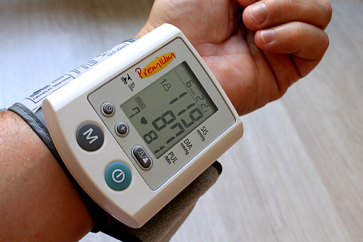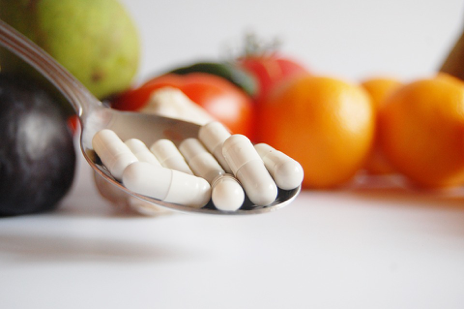If you suffered from preeclampsia in your first pregnancy, you may be wondering how to prevent preeclampsia in second pregnancy. Preeclampsia is a rare condition that is usually only seen in 1 out of every 200,000 pregnancies. It is characterized by protein in the urine, and high blood pressure. It can lead to more severe complications such as; seizures, risk of preterm birth, and can be fatal to both mother and baby. This article will give you information on how to take good care of yourself while pregnant to minimize your chances of this happening.
How To Prevent Preeclampsia in Pregnancy
Having preeclampsia in your first pregnancy can increase the risk of having it again in subsequent pregnancies. It all depends on other risk factors you may have for this condition including:
- High blood pressure
- Diabetes
- Teenagers or women over the age of 40
- Autoimmune disorders
- Polycystic ovarian syndrome
- Obesity
- Kidney disease
- Family history of preeclampsia
- Twins, triplets, or quadruplets
Keeping these conditions under control and taking good care of yourself prior to, and during pregnancy can decrease the risks of getting this condition again. Here are some tips that may reduce your risk of preeclampsia in a pregnancy::
-
1. Get Early and Ongoing Prenatal Care
See your doctor as early as possible in your pregnancy, and do not skip any visits. Discuss with your doctor about testing for; kidney function, blood clotting issues, and get your blood pressure checked. Continuing your prenatal care throughout pregnancy will help your doctor notice any signs of preeclampsia early on, so you can be treated.
-
2. Get a Home Blood Pressure Monitor
Get a blood pressure monitor for your home. You may want to keep a journal of at least daily blood p ressure checks to show your doctor at every visit. This can help your doctor see any changes in blood pressure that are occurring at home. Some people even suffer from “white coat syndrome,” where blood pressure is temporarily elevated due to the stress of doctor’s visits. Checking your blood pressure at home can give your doctor a more true reading.
ressure checks to show your doctor at every visit. This can help your doctor see any changes in blood pressure that are occurring at home. Some people even suffer from “white coat syndrome,” where blood pressure is temporarily elevated due to the stress of doctor’s visits. Checking your blood pressure at home can give your doctor a more true reading.
-
3. Control Weight Gain
Try to eat a very healthy diet, avoid junk foods, and get some exercise every week. While you shouldn’t try to lose weight during pregnancy, you will want to keep weight gain at a steady level. Keeping your weight under control is especially important if you suffer from diabetes, which causes an increased risk for preeclampsia.
-
4. Get Enough Magnesium
 Magnesium may help reduce the risk of preeclampsia. This mineral helps relax smooth muscle, blood vessels, and stress levels. Magnesium also helps to keep blood pressure stable. The best foods for magnesium include; dark leafy greens, beans, avocado, fish, and lentils.
Magnesium may help reduce the risk of preeclampsia. This mineral helps relax smooth muscle, blood vessels, and stress levels. Magnesium also helps to keep blood pressure stable. The best foods for magnesium include; dark leafy greens, beans, avocado, fish, and lentils.
-
5. Take a Probiotic
Probiotics may help balance the immune system, reducing the risk of preeclampsia. You can either take supplements or get them from a serving of yogurt daily. Getting live healthy probiotics from yogurt will also help you meet your dairy servings each day.
-
6. Eat Foods High in Potassiu
One good tip on how to prevent preeclampsia in second pregnancy, is to keep your circulatory system in check. Potassium rich foods can help regulate blood pressure, protect your heart, and balance the nervous system. Try to eat foods like; bananas, oranges, baked potatoes with the skin on, and orange juice.
-
7. Ask About Calcium Supplements
 Ask your doctor about supplementing calcium. Studies have shown that taking calcium supplements if you are high risk, may reduce the risk of preeclampsia. Make sure you get enough calcium foods in your diet like; low-fat milk, yogurt, cottage cheese, green leafy vegetables, and salmon.
Ask your doctor about supplementing calcium. Studies have shown that taking calcium supplements if you are high risk, may reduce the risk of preeclampsia. Make sure you get enough calcium foods in your diet like; low-fat milk, yogurt, cottage cheese, green leafy vegetables, and salmon.
-
8. Have Sex
New research has shown that sexual intimacy with the father of your baby may prevent preeclampsia. There are enzymes in your partner’s sperm that can decrease your immune response to the baby. This only works if the baby’s father is your only sexual partner. Intimacy can also help reduce stress, which can further reduce the risk of preeclampsia.
-
9. Have Dental Work Performed
If you have gum disease, or dental issues in general, you may be at higher risk for preeclampsia. If you are planning a second pregnancy, and are at risk for preeclampsia, getting your teeth taken care of prior to pregnancy can reduce your risk. Don’t wait. Many dentists are hesitant to perform routine dental care during pregnancy, unless it’s an emergency need.
-
10. Drink Beet Juice
 Beet juice contains nitrates that can help lower blood pressure, and increase oxygenation to the body’s tissues. It also helps keep your potassium and sodium levels in check. You can juice beets, or raw beetroot in a juicer and drink daily. It is also high in fiber and can help with the constipation that occurs in pregnancy.
Beet juice contains nitrates that can help lower blood pressure, and increase oxygenation to the body’s tissues. It also helps keep your potassium and sodium levels in check. You can juice beets, or raw beetroot in a juicer and drink daily. It is also high in fiber and can help with the constipation that occurs in pregnancy.
-
11. Drink Plenty of Fluids
Make sure you get at least 64 ounces of fluids each day. Choose from things like; spring water, juice, herbal teas, and milk. Try to limit coffee to two cups daily, and avoid sodas or drinks sweetened with high fructose corn syrup. Caffeinated beverages can raise blood sugar and cause dehydration.
12. Eat a Diet High in Fiber
Fiber helps keep blood vessels healthy. It also helps with bowel regulation, removes toxins from your digestive system, and keeps you feeling full longer. Eat plenty of whole grain cereals, apricots, oatmeal, beans, bananas, and avocado.
13. Make Sure Vitamin D Levels Are Stable
 One good piece of information on how to prevent preeclampsia in second pregnancy is to try to keep your vitamin D levels stable. Researchers have found that mothers with preeclampsia tend to have lower vitamin D levels. It is thought that adequate vitamin D acts as a hormone to keep blood pressure levels stable, and helps keep the immune system healthy. Vitamin D is best obtained by getting adequate amounts of sunlight. You can also eat foods enriched with vitamin D like; dairy products, fatty fish, enriched cereals, and eggs.
One good piece of information on how to prevent preeclampsia in second pregnancy is to try to keep your vitamin D levels stable. Researchers have found that mothers with preeclampsia tend to have lower vitamin D levels. It is thought that adequate vitamin D acts as a hormone to keep blood pressure levels stable, and helps keep the immune system healthy. Vitamin D is best obtained by getting adequate amounts of sunlight. You can also eat foods enriched with vitamin D like; dairy products, fatty fish, enriched cereals, and eggs.
